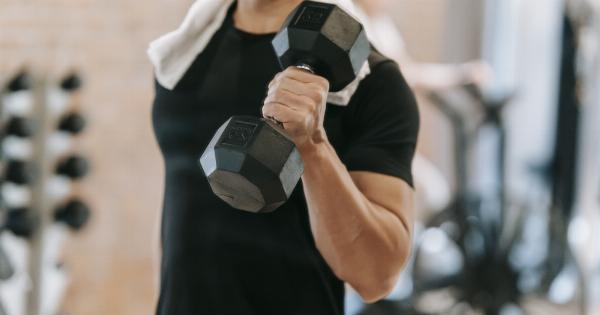It’s common to experience muscle pain after exercising, especially if you’re new to working out or pushed yourself harder than usual. While muscle soreness is a normal part of the process, it can be frustrating and debilitating.
The good news is that there are several ways you can prevent muscle pain after exercising. Here are 10 tips to help you mitigate post-workout soreness:.
1. Warm-up Before Your Workout
It’s essential to warm up before you start working out. Doing so increases your blood flow and helps prepare your muscles for the strain that’s about to come.
Your warm-up should include moderate cardio exercises that increase your heart rate and breathing, as well as dynamic stretching and mobility exercises to loosen your muscles and joints.
2. Stretch After Your Workout
Stretching after you work out is just as important as warming up. It helps to cool down your muscles and prevent them from tightening up.
Doing so can also increase circulation, which can help move any waste products out of your muscles and speed up the recovery process.
3. Hydrate Before, During, and After Your Workout
Staying hydrated not only before, during, and after your workout can help prevent muscle cramps and soreness. Drink plenty of fluids to keep your body hydrated and replenish any lost fluids due to sweating during exercise.
Water, coconut water, and sports drinks containing electrolytes are ideal.
4. Take Time to Rest
Rest is essential when it comes to preventing muscle pain after exercising. Your muscles need time to recover and rebuild after a strenuous workout. Give them at least a day or two to rest between workouts of the same muscle group.
Remember that quality rest and sleep can play a crucial role in post-exercise recovery and muscle health.
5. Gradually Increase the Intensity of Your Workouts
If you’re looking to push yourself and increase the intensity of your workouts, be sure to do so gradually. Gradual progression allows your muscles to adjust, and it helps prevent over-exertion and muscle strain.
6. Get a Massage
Getting a massage is an effective way to prevent muscle pain after exercising. Not only does it help increase blood flow to your muscles, but it can also help reduce inflammation and muscle soreness.
Massages can be done by a professional or by using a foam roller to massage sore muscles yourself regularly.
7. Prioritize Nutrition
Your body needs the right nutrients to function correctly and support healthy muscle growth and repair. Protein, omega-3, vitamin D, and magnesium are crucial nutrients for muscles.
Ensure you fuel your body with healthy foods, including fruits, vegetables, whole grains, and lean protein like chicken, eggs, and fish.
8. Use Heat or Cold Therapy
Heat and cold therapy can provide quick relief for post-workout muscle soreness.
Applying a heat pad or hot water bottle improves blood circulation and promotes muscle relaxation, while using ice packs can help reduce inflammation and soothe pain in the affected area.
9. Wear the Right Gear
Wearing the right workout gear can help prevent muscle pain and injury easily. Get proper-fitting, supportive shoes to reduce the impact on your joints and build a proper posture when working out.
Also, wear comfortable clothing made of breathable, flexible materials that will keep you cool and reduce friction as you move your body.
10. Don’t Skip Recovery Days
Avoid pushing yourself too hard and taking recovery days for granted. Incorporate rest days into your or it’s routine to help your muscles recover.
Remember that taking care of your body and giving yourself enough rest time is a crucial part of your fitness journey.































